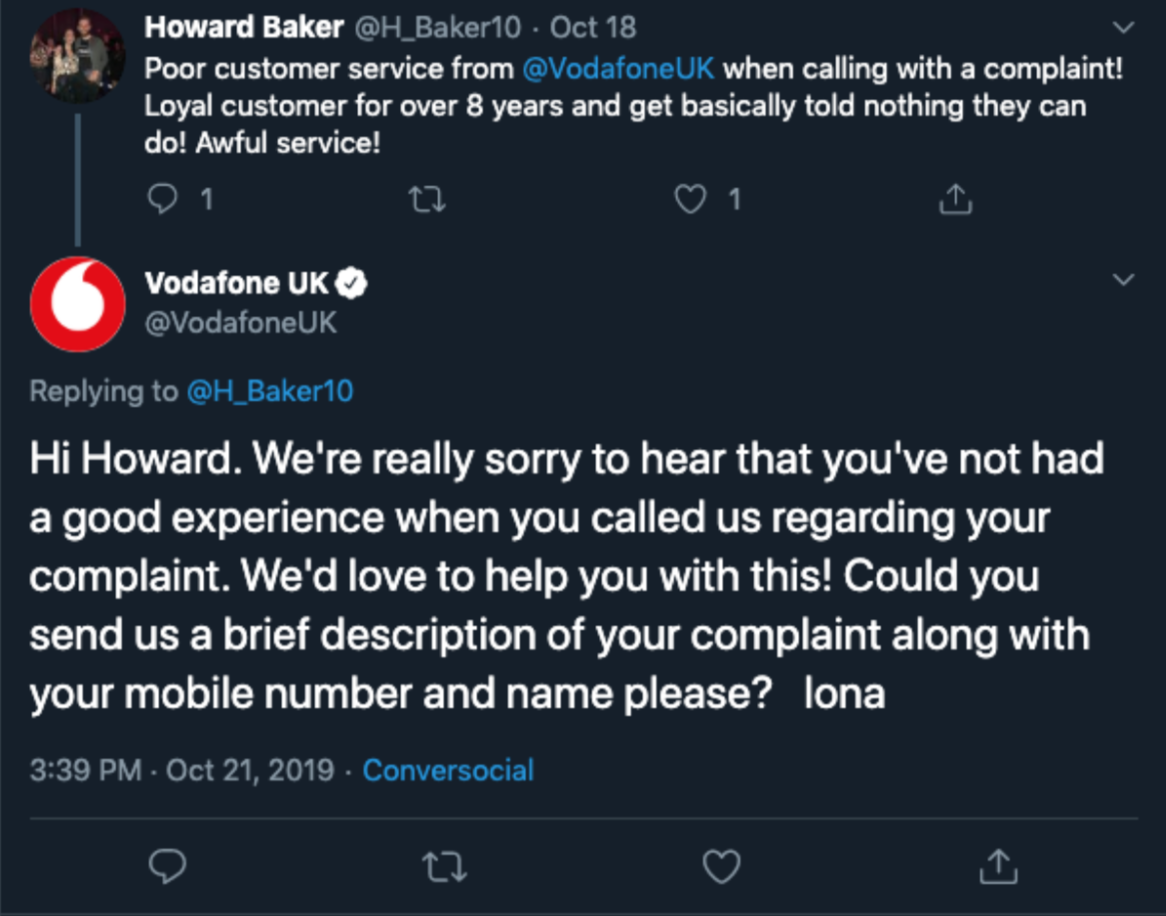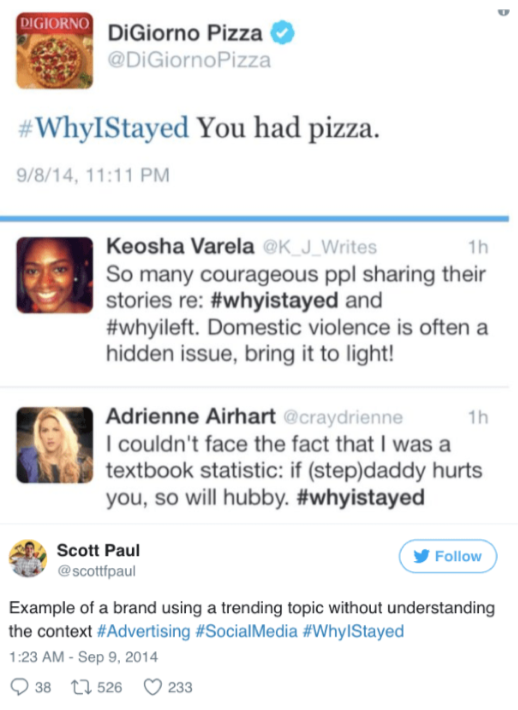Startups face a steep set of challenges as they grow and scale. One particularly treacherous stumbling block can be the poor management of a PR crisis, which can often be enough to tear down a startup’s future in our world of social media. We’re online 24/7 and brands have to tussle with fake news, cyberattacks, defamatory rumours and hackers. Whether it’s a data breach, an executive scandal, a negative comment, an unsuccessful event, or a poorly planned marketing campaign, you need to proactively prepare and reactively respond to those blunders that alight like wildfires. Here’s our guide to expertly triaging, tackling, and dousing those fires before they leave your brand’s reputation in ashes.
Proactive Preparation
Firstly, you should assess where incidents could possibly originate so that you can learn what to look out for. You need to monitor what people are saying about your brand through sentiment analysis (services such as Signal AI, Meltwater and Cision) and watch whether the average volume threshold of negative mentions of your brand changes. If you see a move towards negative, regard it as a warning.
Why is it So Important?
According to a study, how companies immediately react to PR incidents has a lasting impact on their brand reputation.
Using real-life examples from PepsiCo, United Airlines and Uber, Clutch.co surveyed 500 consumers to determine their willingness to purchase products and services from those three brands immediately after, and then seven months after, their public incidents. This study strived to answer the following questions:
Does time heal all wounds? Or, do certain events, and their subsequent message, cause permanent damage to a brand?
PepsiCo
PepsiCo kept its consumer base after the incident because it acted on its marketing error right away, removing the commercial and issuing a public apology. Before the PR crisis, 58% of consumers were willing to purchase PepsiCo, which dropped to 55% immediately after the crisis. Seven months later, that number recovered to 56%. Unlike the following examples of Uber or United Airlines, PepsiCo had a pre-existing positive brand perception that they could draw from, which meant people gave them more slack.
United Airlines
In contrast to PepsiCo, United Airlines waited several weeks to apologise, which consumers considered disingenuous and contrite. Before the PR crisis, 68% of consumers were willing to purchase flights from United Airlines, which dropped to 42% immediately after the crisis. Seven months later, that number only recovered to 52%.
Uber
Uber ended up facing the biggest threat to its brand reputation in the aftermath of its PR crises, simply because of multiple occurrences of misbehaviour and the absence of a short-term PR strategy: the firing of the CEO, declarations of corporate fraud, and multiple claims of sexual assault of both passengers and Uber employees.
Before the PR crises, 60% of consumers were willing to ride with Uber, which dropped to 47% immediately after the crisis. Seven months later, that number only recovered to 50%.
These examples demonstrate that the way companies immediately react to PR incidents has a lasting impact on their brand reputation. As a far smaller company in comparison to these three examples, you, unfortunately, won’t have the thousands of consumers and a global brand to help you weather the storm, so PR incidents can be far more devastating.
Social Media
One of the greatest firestarters to watch out for is social media, which can be a very public vehicle for misconstrued content, complaints, and negative comments or reactions.

Dealing with Complaints and Negative Comments
The staggering speed and fluidity of social media is a wonder of our digital age, but it leaves brands at risk when a single complaint or negative comment can quickly gain impetus and snowball. Receiving them isn’t fun for anyone, particularly if it’s unfounded or unjustified. As appealing as it is to leave the complaint or grievance unacknowledged, they can take on lives of their own via social media, so don’t let them go unrecognised.
Top Tips
1. Use technology that allows you to track all mentions of your brand, branded hashtags, and branded URLs shared on social, whether they include a @ mention or not, so you don’t miss important feedback.
2. Response time matters. People have increasingly higher expectations when it comes to customer service, with over ⅓ of consumers expecting a response from a brand on social media within 30 minutes.
A few years ago, following a cybersecurity breach at Buffer where customers’ social media accounts were compromised and hackers circulated spam messages, Buffer was required to shut down their services during the investigation. However, they created a blog post to update their consumers in real-time and proved that constant communication and transparency was a winning crisis response. Consequently, a number of their consumers upgraded their accounts as a direct result of Buffer’s stellar handling of the situation.
3. Don’t respond to complaints or negative comments negatively or defensively, always respond in a helpful, polite and genuine tone. Take the following notoriously bad customer service example below, where the head chef of Boston-based restaurant, Pigalle, began a vulgar Facebook dispute with a customer over an unsavoury review:

4. Avoid canned responses; not only should you strive to make a human connection to ensure the other person feels listened to, but canned responses can backfire:

5. Reply publicly before and after moving to a private direct message. Responding publicly is crucial to demonstrate that your brand is transparent, alert, and helpful. Then, move the conversation to a private direct message to ask for more detail to work towards a solution that might require sensitive information like account details. Later, follow up publicly that the problem was settled.

6. If a comment or complaint crosses hate language boundaries (e.g. racist, sexist, aggressively derogatory connotations), it may necessitate a brand response which plainly states that that language is not acceptable and that it violates your online community terms (which should be in your bio or ‘about me’ section).
E.g. John Lewis’s Community Terms:
Although we don’t want to censor any conversations within our Facebook community, we are committed to removing anything abusive, threatening, indecent, irrelevant, discriminatory, trolling, defamatory, illegal, harassing, spam or a scam.
Take caution when deleting comments, as it can induce more outrage and vitriol. If it breaches your online community terms, you may report it, and on some networks such as Facebook, hide the comment from the public (but the comment remains visible to the user who posted, and their friends).
7. Stand by your customers
If you are hit with a PR crisis that isn’t a consequence of something you have said or done but rather an external attack on your company, put your customers first and communicate with strength and solitude.
As a very extreme example, following a terrorist attack in San Bernardino in 2015, the US Government insisted that Apple releases a new iOS that would have a back door that would give the government unrestricted access to any user with an iPhone.
Apple consequently refused with this public letter, not for their sake, but for their customers. The reaction? A very public debate on the future of cybersecurity which divided the public. However, tech giants such as Google, Microsoft and Facebook stood by Apple and formed the Reform Government Surveillance Coalition.
Implement Rules for Content
Every piece of content that is released publicly – social media posts, blog posts, press releases, interviews, etc. – should be checked and approved against your guidelines and policy. Social media guidelines will help you dodge a faux pas, and a stricter social media policy will help you avoid any legal or security troubles and protect your reputation.
Proof and proof again. This isn’t just for spelling mistakes; you must check that you’re not posting anything that could rock the boat. If large corporations, with an experienced marketing team that manage content, or run campaigns that make you wonder what they were thinking, you can make a mistake too. As you can see below, without taking a moment to sense check your content or ask someone else’s opinion, you can easily accidentally overstep the mark.

Another very unfortunate prime example is Bud Light’s “Up for Whatever” campaign. Originally intended as a marketing campaign that evoked spontaneity and fun; the company printed its beer bottles with the slogan: “The perfect beer for removing ‘no’ from your vocabulary for the night. #UpforWhatever.”
Very quickly, people began to suggest that the slogan could very easily be construed as an endorsement of rape culture. It seems incredulous that Bud Light’s marketing team could have been so ignorant, but there are plenty of other examples to showcase how other brands have made similarly embarrassing mistakes.
Be Conscious of the World Around You
World events and trending movements will always affect how products, campaigns and services are received. Often, brands make blunders in the greater context of world events and news, so be conscious of what’s going on in the world.
In the aftermath of natural disasters, political eruption and significant social movements, it’s probably best not to run a campaign or promotion. For example, three companies shamefully jumped on a trending hashtag #Sandy in the wake of the devastation of Hurricane Sandy in 2012:

Hashtags are a great way for brands to engage with what’s currently trending. But be incredibly careful when jumping on a trending hashtag, as it can be another way to accidentally post insensitive content. For example, when DiGiornio Pizza unwittingly made light of domestic violence by misusing the #WhyIStayed hashtag, which was trending at the time.

Before using a trending hashtag, take a look at what it’s referencing.
It’s not just about current events either. As the Boston Marathon 2017 came to a close, Adidas sent out emails to customers that they knew had completed the race with the subject line: “Congrats, you survived the Boston Marathon.”, an incredibly insensitive oversight in the context of the terrorist attacks at the Boston Marathon in 2013.

How to Mitigate Your PR Crisis
Press Pause
“When things are spiralling, don’t spin with them. Settle into an intense sense of calm, like the eye of a hurricane.” – Krista Berlincourt, one of Business Insider’s PR 50.
Just the same as any other form of crisis, a PR incident calls for a clear head and a clear plan, not a knee-jerk reaction. Although speed and timing are of the utmost important, there’s a distinction between responding expediently and hastily. Obviously, as a startup founder, you’re personally invested in your brand’s reputation, so it’s easy to lose some objectivity if something goes wrong (especially if a public allegation is untrue). So, before you start mapping out your reaction plan, take a quick pause, breathe, and take stock of what has happened – find out everything you can before briefing your stakeholders on what’s happened. Then, confirm that they know what is expected of them, and how (if required) they should respond to media attention going forward.
Importantly, seek to inform, not alarm – by calling an incident an “emergency” or “crisis” it invokes panic and paralysis, not clear and measured action.
Don’t Bury Your Head
Avoid going radio silent; this is a common, but a highly adverse response. Avoidance is built on fear, which begets distrust and quickly puts you on the defensive, even if you’ve done nothing wrong. When a company knowingly sweeps an issue under the rug, there’s no doubt of the motivation, and you can bet it will surface in the end. Indifference is more toxic than incompetence.
Establish the Victims
Unfortunately, once you’ve unpaused, you won’t have the luxury of time when it comes to responding. Every crisis will have its victims – your next step is identifying who they are, and how best to reach them. Has it made it to the media? Will a post on social media pacify the situation or will you need to issue a press release? What channels are best placed to reach the involved parties?
Determine Your Position
Skirting around an issue only sustains the suspense and failing to address an issue only continues the conversation. Reframing and deflecting only increases frustration, commotion and confusing, all of which further damages your brand.
So, now you’ve established what has happened, and whom it’s affected, you need to settle on how you’re going to deal with the issue, and what front you need to take – one your whole team needs to support. For example, do you need to issue an apology and take responsibility? Or, do you need to publicly state that you’re holding your ground?
Filter Your Message
Once your position has been agreed upon, you can begin filtering out your message. Target the media channels where your victims are affected – the first 48 hours are the most critical. If you’re not sure what your message should be, the best approach is to be honest, accept responsibility, and be transparent about what happened. This three-point statement is a simple and effective format – “‘We are [insert feeling]. We are looking into it. We are [here].”
If you know all the facts, add details about how you’re resolving it, and how your startup will learn from the event.
It is important that a single person executes the message, and remains as the single point of contact to talk to all external parties. If you are asked a question about an incident, and you only know 10% of the story, don’t offer an answer that extrapolates the other 90%. It’s okay to say “I only have 10% of the information, and I’m working to find the other 90%, but this is what I know right now…”.
Before sending out your message, you should ask someone to look over the copy, someone who can offer an objective, outside perspective to evaluate the message – it’s easy to form an internal echo chamber then crafting the communication.
Monitor
Now that your game plan is in action, it’s vital that you remain focused and avoid laxity. Monitor how your position and messaging is being received, as you may need to adjust your plans if the crisis grows or changes – perhaps it’s impacting new parties, or accruing additional media coverage and information.
Once it blows over, you will need an internal debrief to discuss how well prepared you were to handle the incident, how people performed in their appointed roles, whether additional training in crisis management is required, and what you have learned to manage the next crisis better.
Draw the Positive
A PR incident isn’t necessarily always a damage threat to your company; it can present an opportunity to demonstrate your calibre and tenacity, as well as engage authentically with your community at large. Obviously, the power to turn the situation to your advantage might not always lie in your hands, but it’s always worth the effort.
Encourage a Culture of Flagging Early, and Flagging Often
By building a practice where people are empowered and encouraged to flag incidents. If you use a communication platform such as Slack, it might be a good idea to create a dedicated channel for flagging potential issues to triage before they become more serious – for example, employees noticing and flagging a customer issue or a bug in your system.
Don’t forget to thank every person who does flag something to positively reinforce the behaviour.
“Flag early, flag often. Otherwise, what a bucket of water would’ve doused now takes 100 firefighters to fix.” – Krista Berlincourt, one of Business Insider’s PR 50.
Summary
Although PR crises can be particularly debilitating for startups only just forming a brand reputation, and lacking the resources of large corporations to weather the storm, you can still create a plan to help your company survive whatever is thrown it’s way. Whether the issue is minor or major, preparedness is power in the face of these situations will fundamentally protect your company, employees, and consumers.
To prepare for your own hiccups, create a ‘flag, and flag often’ culture; overlay the tools to enable that culture, and seek to inform and not alarm. If an ‘oh no’ moment arises, press pause before reacting, identify the victims, determine your position before composing your public messages, monitor the reaction of your message and take the chance to use it as a learning opportunity once it’s blown over!
If you’re looking for advice and tips on managing PR for your startup, check out The Startup Guide to PR.


